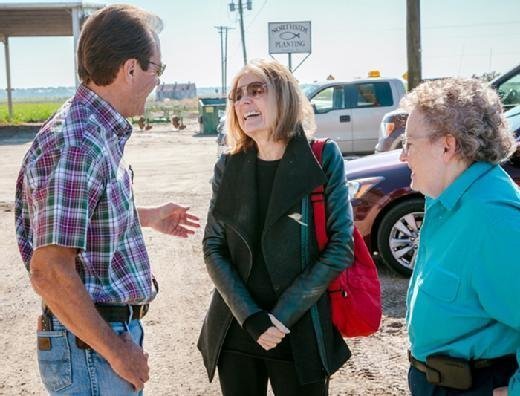Digital transformation project gives historical documents new life- Valutrics
Southern Mutual Help Association has kept paper records chronicling its history since its beginnings in the summer of 1969; documents on policy changes the community group affected, photos, and letters from Louisiana state officials and significant figures in American culture like Gloria Steinem sat in boxes across three climate-controlled locations.
The nonprofit grew out of the drive to build sustainable rural communities in New Iberia, La. — particularly distressed communities that depended on the state’s land and waters. Its impact has been significant, proof of which is found through some 850,000 documents Southern Mutual Help Association (SMHA) amassed — plus 10,000 newspaper archives and thousands of photographs.
Over the years, SMHA had to move those documents four times to keep them from being destroyed during hurricanes, said Lorna Bourg, president and CEO of SMHA.
“After the levees broke [in 2005], I was concerned about sending all of our precious papers back to a place where I was terrified could flood again,” Bourg said. It was time to ensure those documents never had to be physically moved again. But she also needed to ensure the documents would be accessible to other SMHA employees.
“We had to transition to a way that was slimmed down,” she said. “All that paper was not efficient to retrieve anything. It’s all useless if it can’t be searched and used.”
SMHA worked with Jacklyn Ducote Associates in Baton Rouge, which specializes in document archiving, along with the digital services company Ricoh, to kick-off a digital transformation project. This involved 18 months of identifying and indexing documents — everything from oversized and fragile documents that needed to be handled with care to flip charts and ideas written on napkins. Organizing and indexing it all was the most important, and time intensive, part of the process, Bourg said.
When it came time to ship it all out to Ricoh, they used a chain of custody process to address security concerns around the handling of historical documents. Ricoh received documents in batches of 40 boxes at a time, and within two to four weeks delivered the documents back “in excellent order” along with DVDs of scanned images, she said.
Through Ricoh’s use of optical character recognition, those historical records became searchable text. Hyperlinks in new SMHA spreadsheets helped staff members reach documents quickly. The organization now has external hard drive storage with backups on servers in a different state. All of this has made SMHA far more efficient.
“The handling of paper, copying paper and the cost of ink, storage and handling time — those costs are significant,” Bourg said. “It could take hours to locate a document before. Now I can retrieve anything in under 15 minutes.”
SMHA expects to be paperless “Now is the time for telling the stories; for making sure history isn’t lost,” she said.

Moving beyond the paper problem
The paper problem Bourg described isn’t unique to nonprofits or small businesses. Many big companies have digitized their processes, but it’s not unusual for a company to be automated in some areas and not in other areas, according to Thomas Towey, global services specialist at Ricoh USA.
“We met with a customer recently — a billion dollar company — that talked to us about going paperless. They know the benefits, but haven’t committed to taking the steps to get there,” Towey said.
Part of the problem is where to start with a digital transformation project — which really begins with where you want to end up, he said. “We look at where you want to be in the end and work backwards from that.”
There are also silos within companies, budget concerns and cultural stopping blocks, he said.
“We were talking to a client this week and we asked, what comes to mind about this journey and she used the word terrified multiple times,” Towey said. “Companies have barriers to change, especially when it comes to their data.”
Ultimately, going paperless is a fear to move beyond because it’s the most cost effective way to manage content.
“The driver of digitization is efficiency — searchability of documents, allowing documents to be shared and accessed from mobile devices,” Towey said. “We find more and more that digitized documents, when stored safely and named properly, also helps with risk management.”
Digital transformation project drivers
When efficiency alone isn’t enough of a reason, a big trigger for many companies to begin the digital transformation process is a missed service-level agreement, said Timothy Beauchamp, national director, digital imaging services at Ricoh USA.
“When a company isn’t processing Medicare forms fast enough, or student records fast enough, or medical records fast enough, and they are getting fined” it’s time to go digital.
Other times, a digital transformation project begins with the need to consolidate physical space.
Corporations aren’t just looking at the back-end file conversions, however. They also have a nonstop flow of incoming documents to digitize, like invoices, which may come in through multiple P.O. boxes and flow through more than one department within the company, Beauchamp explained.
Scanning those documents and using software to extract the data, based on the business rules of the company, ensures the information is stored centrally and accessible to employees who need it, Beauchamp said.
Digitization has also proven to boost bottom lines, and company leaders see that as the incentive to speed a transformation. Forty-seven percent of CEOs are under pressure to progress in digital business and 56% said in a recent Gartner survey of CEOs that their digital improvements have already boosted profits. A smaller number of CEOs — 20% — are now taking a digital-first approach to business changes.
The costs of a digital transformation project can vary widely, depending on the type of documents, the number of them, and the technology being used in the process. Ricoh assesses a project and the cost based on a sample box of documents, Towey said.
